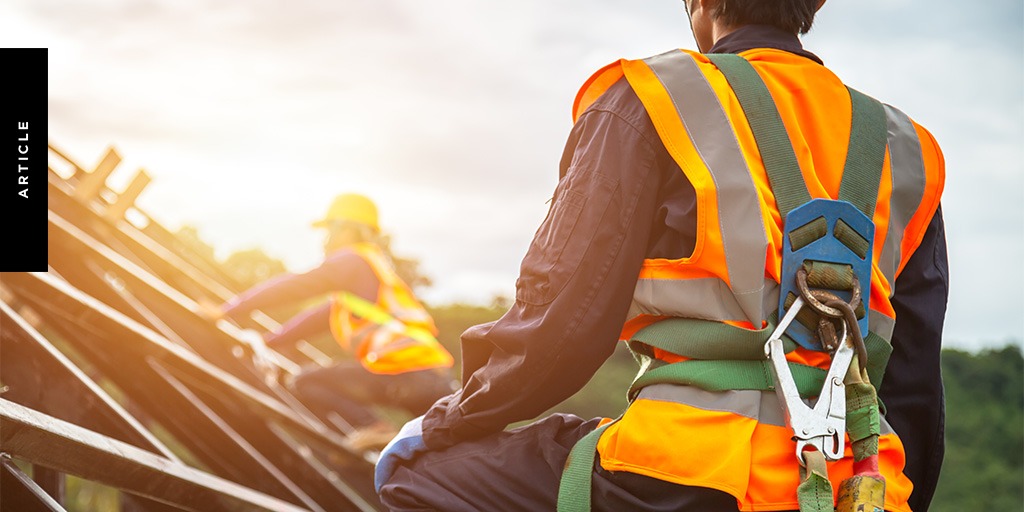The Construction Skills Shortage: A Growing Concern
Across Australia, the construction sector is battling a workforce crisis.
According to the Australian Bureau of Statistics, around 50% of the occupations within the Construction Trade group reported skilled worker shortages. Employers report difficulties filling job vacancies, particularly in specialist trades like bricklaying, carpentry, and electrical work. As older workers retire and fewer young people enter apprenticeships, the skills gap continues to widen.
According to the National Skills Commission, the industry will need at least 100,000 new workers by next year to meet demand. Focusing in on just the residential construction sector, it alone needs 83,000 more workers to meet the goal of 1.2 million new homes by decade’s end, according to the Housing Industry Association.

An Untapped Workforce: People with Disabilities
About 18% of Australians live with a disability, yet people with disabilities remain underrepresented in the construction workforce. Nine in 10 people with disabilities have an invisible disability such as ADHD, autism, or dyslexia, which often goes unrecognised in traditional hiring and training processes.
Inclusion is a key reason to employ people with disabilities. It’s also about recognising the skills and potential of a diverse workforce. Research shows that businesses with inclusive hiring practices benefit from increased innovation, improved problem-solving, lower absenteeism, higher productivity, lower workplace risk, and greater employee retention.
Making Vocational Training More Accessible
Accessible training is essential for ensuring more people can enter and succeed in construction roles. The introduction of the Fee-Free TAFE initiative is a step in the right direction, offering tuition-free training for students with disabilities in eligible courses. For example, Victoria’s TAFE offers 80 fee-free options.
To truly open doors, vocational education providers need to go further. Effective strategies include:
- Designing courses with flexible learning options, such as part-time and online study
- Offering clear, easy-to-navigate eLearning modules for neurodiverse learners, and
- Providing hands-on, practical training tailored to different learning needs.
These changes will benefit students with disabilities and improve training for all learners by making information clearer and more accessible.


Implementing Accessibility Standards in Training
Training providers and businesses investing in education need to consider accessibility from the ground up. The Web Content Accessibility Guidelines (WCAG) 2.2 set the standard for accessible digital content, ensuring training materials are readable, interactive, and usable for all learners.
Practical steps include:
- Having closed captions for training videos
- Using easy-to-read fonts and high-contrast text, and
- Allowing flexible course completion times for those who need it.
Construction businesses investing in in-house training can work with registered training organisations (RTOs) to ensure materials meet these standards and cater to diverse learning needs.
Supporting Neurodiverse Learners in Construction
Neurodiversity is an important consideration in training and employment. Conditions such as ADHD, autism, and dyslexia affect how individuals learn and process information, meaning traditional teaching methods may not always be effective.
When offering training, use these tips:
- Break content into smaller, digestible modules
- Use visual aids and hands-on demonstrations, and
- Allow self-paced learning and clear instructions.
Simple adjustments like these can make a significant difference in helping neurodiverse individuals thrive in the construction industry, says the University of Technology, Sydney (UTS).


Insurance Considerations for Accessible Training
Investing in inclusive training is a smart business move, but it also comes with new considerations for risk management.
- Workers’ compensation insurance ensures all employees, including those with disabilities, are covered for workplace injuries
- Public liability insurance protects against injuries that may occur to third parties who are on site or in connection with the business activities.
- Professional indemnity insurance is essential for businesses providing in-house training, safeguarding against claims related to the quality or accessibility of the training, or where incorrect advice is provided to a third party
- Plant and equipment insurance covers training-related damage to machinery, including modified equipment for accessibility.
We tailor insurance to cover the unique risks of inclusive training programs. Protect your business while building a stronger, more skilled workforce.

